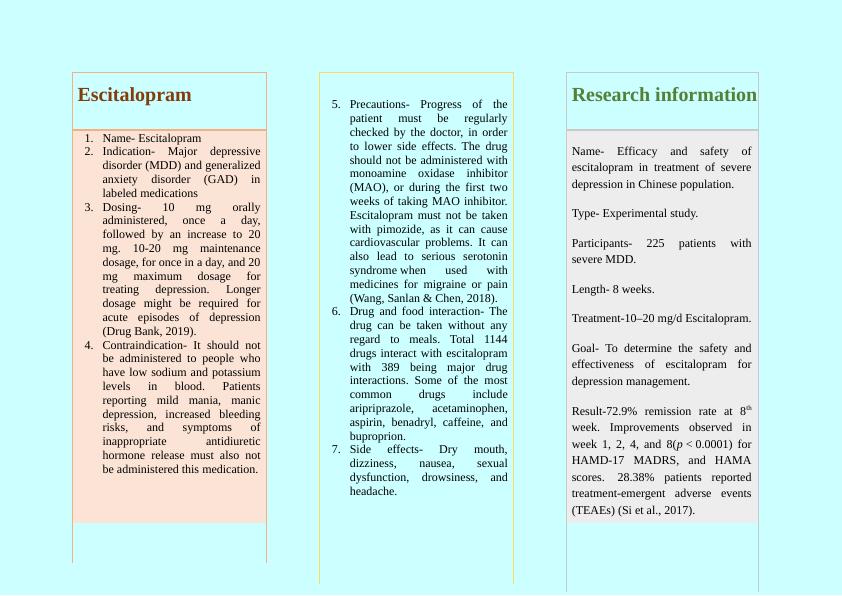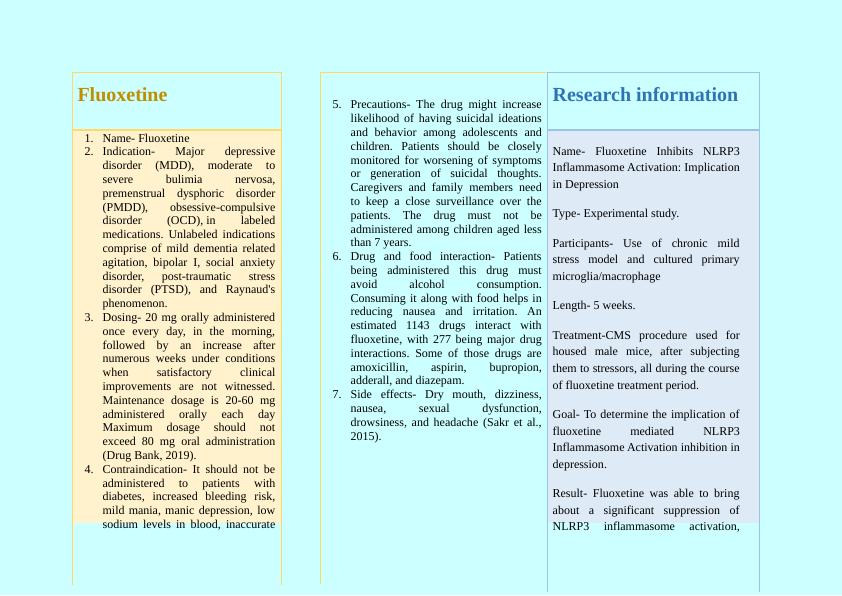Psychiatric Disorders: Types, Symptoms, and Treatment
Develop a teaching plan for two psychotropic agents and design a pamphlet providing education on each agent.
6 Pages2068 Words4 Views
Added on 2022-12-26
About This Document
This article provides an overview of psychiatric disorders, including their types, symptoms, and treatment options. It specifically focuses on major depressive disorder (MDD), discussing its symptoms, diagnosis, and the use of antidepressant medications such as escitalopram and fluoxetine. The article also highlights the global impact of MDD and the importance of monitoring patients for potential side effects.
Psychiatric Disorders: Types, Symptoms, and Treatment
Develop a teaching plan for two psychotropic agents and design a pamphlet providing education on each agent.
Added on 2022-12-26
ShareRelated Documents
End of preview
Want to access all the pages? Upload your documents or become a member.
Treatment of Depression and Anxiety with Antidepressants
|5
|1232
|66
Culturally Safe Nursing Intervention and Psychoeducation for Major Depressive Disorder
|8
|2164
|122
Mood and Anxiety Disorder
|5
|1003
|14
Healthcare Management Assignment Help Services
|13
|3346
|40
Essay on Depression in Adolescence
|5
|983
|31
Free Assignment on Psychotropic Medications
|11
|2974
|24



